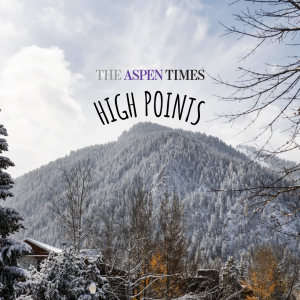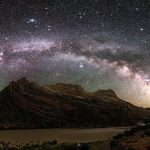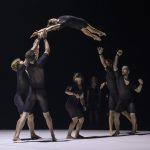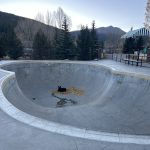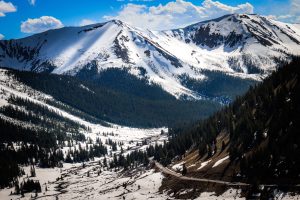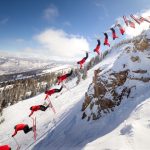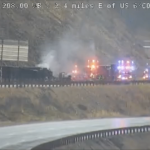‘Get friendly with the stars’: In Colorado, more than 30 places are working toward Dark Sky certifications
Mountain towns including Frisco, Leadville, Salida, Silverton, Meeker, Grand Lake and Old Snowmass, as well as 12 state parks, are working to preserve dark skies
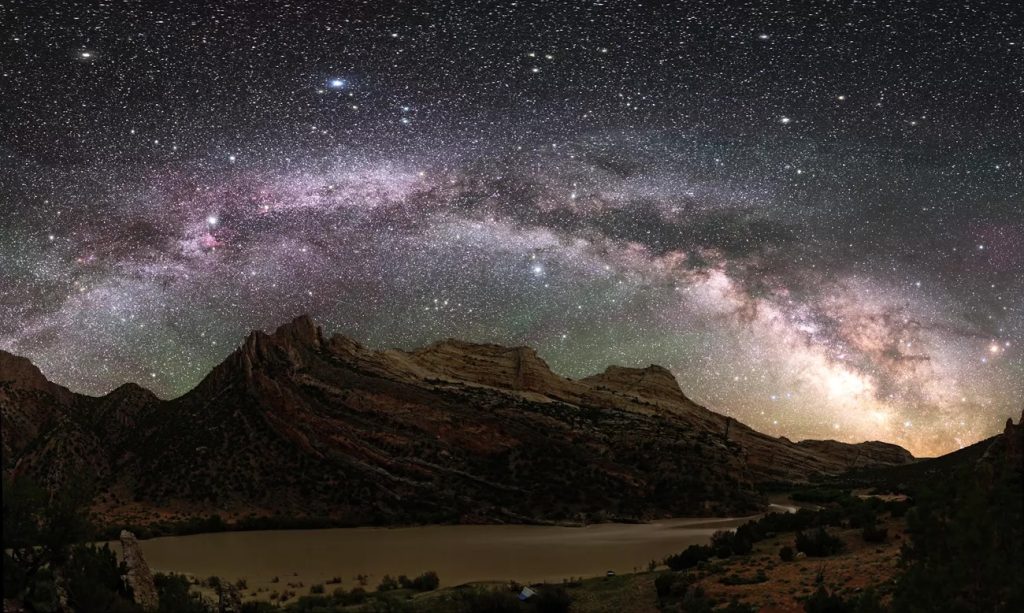
Dan Duriscoe/National Parks Service
On a cool night in August, more than 100 people gathered in a dark corner on Frisco Main Street.
The lights at the Frisco Historic Park were out. Phones were tucked away, out of sight. People lay on blankets in the grass and gathered in groups around telescopes. Astronomy guide Mark Laurin, who is better known as Astro Mark, urged the crowd to let their eyes adjust to the dark.
“I want you to get friendly with the stars,” Laurin said. “And really, what I want you to do is experience the universe.”
With a laser pointer, he pointed out the prominent stars that create asterisms, which he explained are recognizable patterns of stars, like the Summer Triangle. He called attention to how some stars shine brighter than others and the different colors of starlight.
Stopping sometimes to adjust the telescope seat for stargazers young and old, he peppered the audience with questions about the night sky.
“How do stars form, does anyone know?” he asked, before launching into a spiel about how clouds of cosmic dust and gasses condense to create stars.
The crowd chimed in with their own questions: “Can you see Orion’s belt?” No, that constellation is below the horizon during the summer, Laurin said. “How do you find the North Star?” First, find the Big Dipper, he explained, the North Star will be off the lip of the ladle.
Every few minutes, gasps and murmurs rippled through the crowd as a shooting star flashed across the sky. It was the peak of the Perseid Meteor Shower, one of the best meteor showers of the year, with up to 150 shooting stars each hour.
“Oh! That was a big one,” he said, after a meteor streaked from one edge of the horizon to the other, leaving a smoky trail that lingered for several seconds.
Across Colorado, a growing movement is encouraging residents and visitors to connect with — and protect — the night sky.
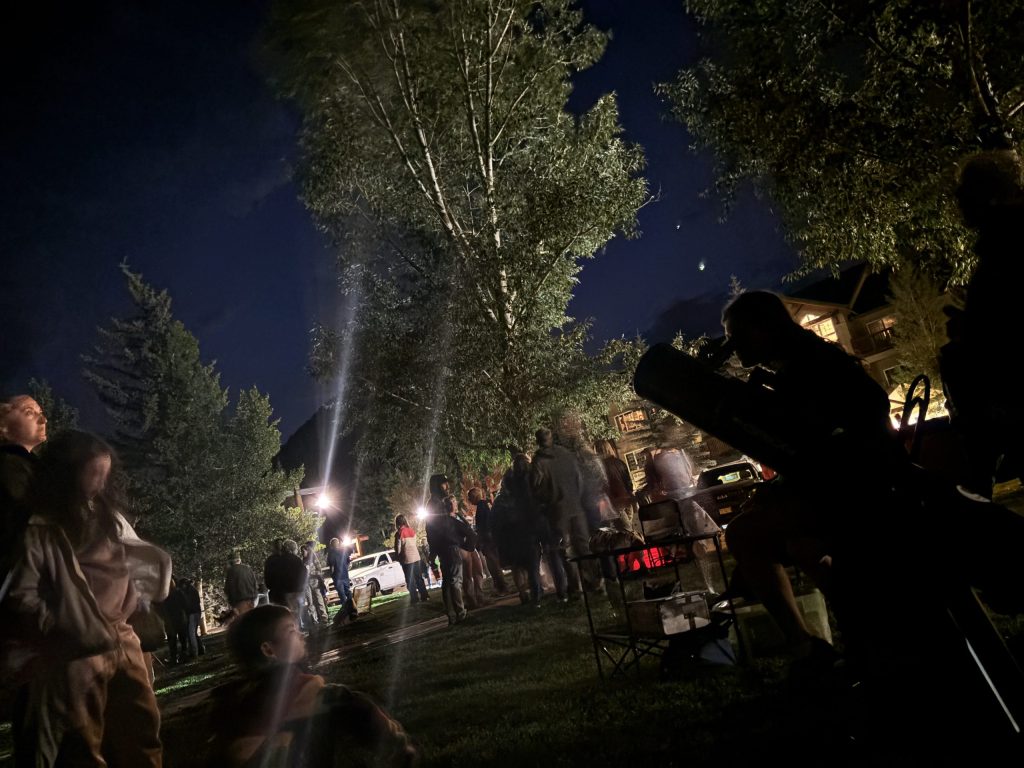
Frisco is one of nearly three dozen locations in Colorado that are working toward certification as an official Dark Sky Place. The town’s Park After Dark event series this summer was a small part of this larger effort to foster appreciation for the night sky, change how communities think about outdoor lighting and reduce light pollution.
The towns of Berthoud, Leadville, Salida, Silverton, Meeker, Grand Lake, Estes Park, Old Snowmass, Telluride, and Nederland are also among those working to become certified as Dark Sky Places. Earlier this year, Breckenridge became the first mountain resort town in the state to achieve that designation.
Colorado Gov. Jared Polis also announced in January that a dozen state parks, including Rifle Gap State Park and Steamboat Lake State Park, would go through the process to become designated as a certified Dark Sky Places.
“Colorado has been an emerging leader these past few years,” DarkSky International Communities Program Manager Michael Rymer said. “It is a testament to the local advocacy that is going on. The people of Colorado take this seriously — not just to get the most certified places. They care about the night sky.”
DarkSky International
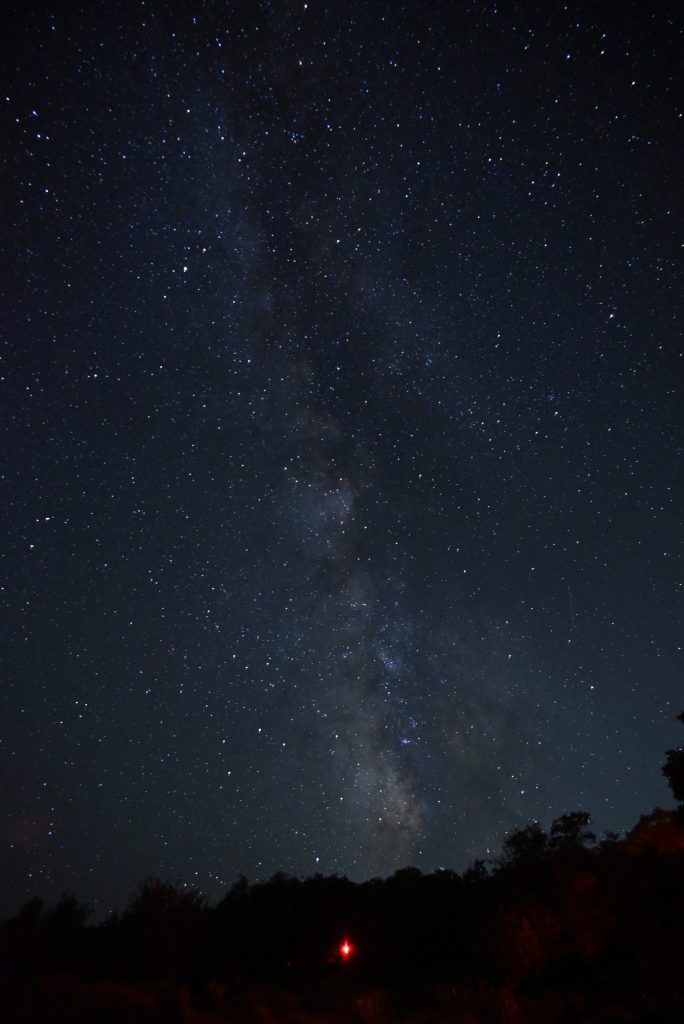
For all of human existence, people have lived under the stars. Throughout history, humans have drawn inspiration from the night sky, with the stars providing a canvas for oral traditions, myths and legends.
But since the invention of the light bulb, artificial light has increasingly infiltrated the natural world. Today, an estimated 80% of North Americans live in cities where light pollution muddies out views of the Milky Way Galaxy.
Colorado Dark Sky Places
Black Canyon of the Gunnison National Park
Browns Canyon National Monument
Curecanti National Recreation Area
Dinosaur National Monument
Florissant Fossil Beds National Monument
Great Sand Dunes National Park and Preserve
Gunnison Gorge National Conservation Area
Hovenweep National Monument
Jackson Lake State Park
Lake Fork Earth & Sky Center
Mesa Verde National Park
Top of the Pines
Communities
Crestone
Norwood
Nucla & Naturita
Paonia
Ridgway
Westcliffe & Silver Cliff
“That’s the reality of our cause, that light pollution is a growing threat,” Rymer said. “It’s exponentially increasing around the world and we’re trying to slow it at least.”
In 1988, a group of researchers at an observatory near Tucson, Arizona, formed the nonprofit DarkSky International in response to the ever-encroaching artificial light that was impacting their ability to study the stars.
In 2001, the nonprofit launched its International Dark Sky Places program, which certifies communities, parks and other places that work to preserve and protect the darkness of the night sky.
Since then, the nonprofit has certified more than 230 Dark Sky Places across 22 countries and on six continents. That includes 165 certified Dark Sky Places in the United States and 19 in Colorado.
The Dark Sky certifications aim to bring attention to the problem of light pollution, foster stewardship of the night sky, and create a framework for places to achieve long-term conservation targets while connecting people with nature.
“When you get to go to these places that are truly dark, you see not just a crazy amount of stars, but you get to see the structure of the Milky Way Galaxy,” Rymer said. “That’s what we want people to see, so that they’ll get moved to take action.”
In the U.S., only Utah, Texas, and Arizona have more certified Dark Sky Places than Colorado, with 29, 21, and 20 certified places, respectively. But Colorado could soon surpass all of those states.
With more than 30 places working toward certification, “Colorado certainly leads the entire world in terms of the most places working toward certification,” Rymer said.
He said Colorado has been successful in rallying support for dark skies because of the grassroot efforts of local residents who care deeply for the night sky.
DarkSky Colorado, a state chapter of DarkSky International, has advocated for dark skies in the state for more than two decades. DarkSky Colorado member Richard O’Brien said the state chapter has been able to coordinate people’s individual interest in protecting the night sky into collective action.
Colorado already has a large population interested in the outdoors and, “like a lot of Western states, we still have quite a few truly dark places left,” O’Brien said. The fact that the Milky Way is visible from so many places in Colorado means residents here already know how powerful the night sky can be and are therefore passionate about preserving it, he added.
Another reason Coloradans get involved with the Dark Sky movement is to help reduce the impacts of light pollution on wildlife. He is the program chair for Lights Out Colorado, which encourages Coloradans to turn off outdoor lights during peak migratory seasons to help birds that navigate at night using the stars. He said this is probably the second biggest reason Coloradans get involved with the Dark Sky efforts.
“In Colorado, the cities are light polluted but there are a lot of places, particularly out in the mountains, that are not light polluted,” he said. “It’s really worth protecting that pristine environment, and a lot of people get excited about that.”
Astrotourism
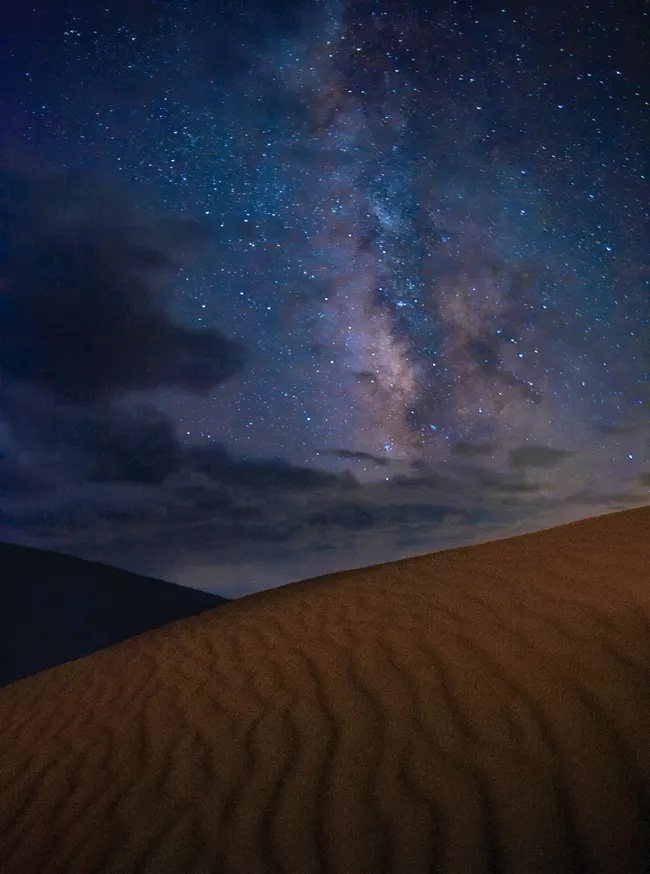
Because outdoor recreation is a core part of Colorado’s economy, mountain communities in particular have embraced the Dark Sky movement — not only in an effort to protect the night sky and support wildlife, but also as a tool to drive tourism.
In the tourism industry, where there’s a mantra that the number of “heads in beds” correlates to profit, Rymer said the Dark Sky certification tells visitors that there is a reason to spend the night in these communities.
Colorado State Parks seeking Dark Sky Place certification
State Forest State Park
Ridway State Park
Rifle Gap State Park
Eleven Mile State Park
Elkhead Reservoir State Park
Crawford State Park
Golden Gate Canyon State Park
Highline Lake State Park
John Martin Reservoir State Park
Mueller State Park
Steamboat Lake State Park
Sweetwater Lake State Park
Staunton State Park
Trinidad Lake State Park
Colorado towns seeking Dark Sky Community certification
Frisco
Berthoud
Leadville
Rangely
Grand Lake
Estes Park
Silverton
Durango
Fort Collins
Salida
Marble
Palisade
Meeker
Ophir
Rico
Timnath
Old Snowmass
Telluride
Pagosa Springs
Nederland
“People come to Colorado, to these towns, to enjoy the nature they offer. So, there is this tourism draw, and the dark sky can very much be a part of that,” he said. “(The towns) want to use the Dark Sky certification as a badge of honor to say, ‘If you come visit here for our nature, be sure to go out at night.'”
In 2022, the Colorado Tourism Office, a division of the Colorado Office of Economic Development and International Trade, established the Dark Sky Certification Mentorship Program to help places in the state achieve Dark Sky certification.
The mentorship program pairs communities working toward Dark Sky certification with a mentor who provides up to 15 hours of on-demand technical assistance to help structure a successful Dark Sky Place application.
In a statement, the Colorado Tourism Office said, “By elevating astrotourism, Colorado taps into a growing travel trend, supports rural economic development and protects wildlife and human health — while connecting visitors with a time-honored and awe-inspiring way to experience the natural world.”
Across Colorado, dozens of events — like the Perseid Meteor Shower watch party in Frisco — took place this summer since parks and communities are required to host outreach events to achieve Dark Sky certification.
Frisco Guest Service Specialist Jana Arnold said that more than 125 people turned out for the outreach event the town hosted in August, including tourists and locals. Arnold said that the astronomy-related events the town hosts are “always more popular than we think.”
By actively engaging people with the night sky, she said the town is able to help spread the word about why protecting dark skies is important.
“It’s a more interactive tie-in,” she said. “You’re like ‘Hey, look at what you’re looking at right now. That’s what we’re working to preserve. That’s what we’re working to help protect.’ It makes it easier for people to form a more personal relationship and care about it a lot more.”
The end goal of astrotourism is to draw in visitors, who are then inspired to protect the night sky themselves, Rymer said. The hope is that the work being done to protect dark skies in Colorado will spread to other parts of the country as people learn from their experience here.
“We want people to go to these places, like the parks, to experience the night sky, understand what it means to identify light pollution, identify the solutions to it and then go home to start making positive change where they live and work,” he said.
Darkening the skies
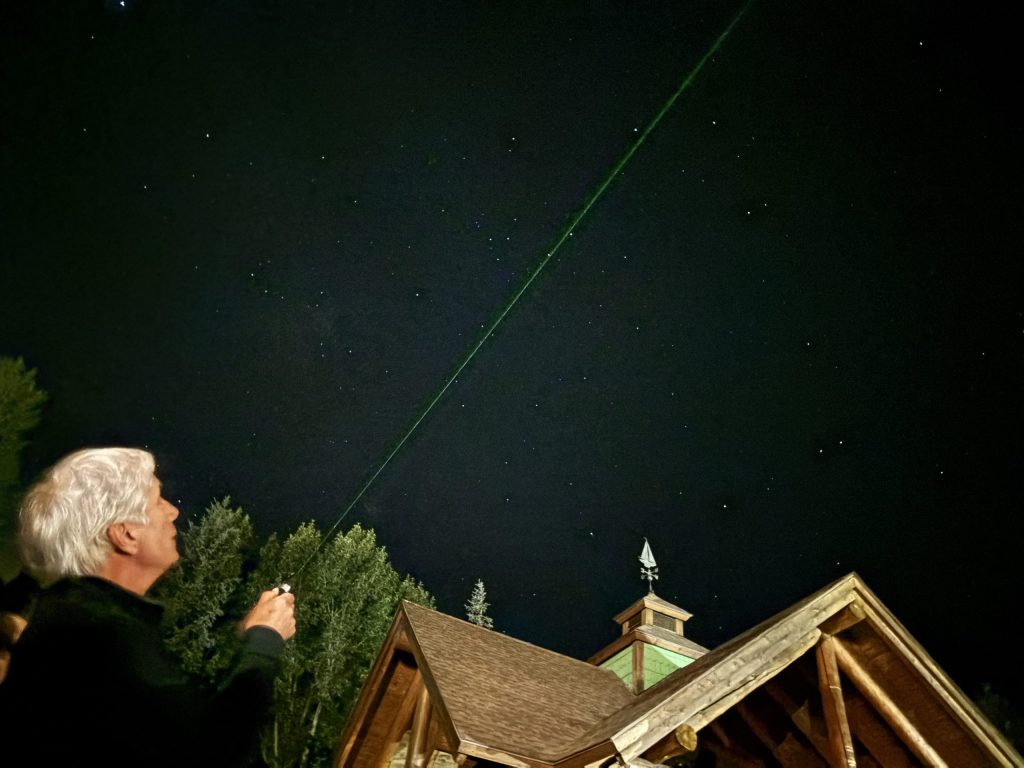
The Dark Sky movement isn’t about getting rid of all artificial lighting, Rymer said, it’s about being thoughtful about how lighting is used.
For towns, the Dark Sky application includes five main pieces: Demonstrated community support for dark skies, community outreach, a sky brightness measurement program to track darkness over time, an inventory of all town-owned lighting and a lighting code that meets DarkSky International’s requirements.
“The lighting ordinance is one of the primary requirements for a Dark Sky Community,” he said. “You have to have this policy on the town’s books, adopted, and enforced.”
To be Dark Sky-compliant, lighting ordinances must include rules aimed at restricting the amount of upward-directed light, avoiding glare and over-lighting, and minimizing the use of short-wavelength, or blue-ish, lights at night.
Frisco Community Development Planner Emma Heth said that the town’s planning commission and town council have started discussions to amend the town’s lighting code. Once the town establishes a new lighting code, she said all town-owned lighting will have to come into compliance within five years and all private lighting will have 10 years to come into compliance.
“Impelementing dark skies mostly involves more responsible, targeted use of lighting,” Heth said. “We say that this Dark Sky project is about ‘dark skies, not dark ground.’ Safety will remain a priority in the town, and lights needed for safety security will be allowed.”
In some cases, a fixture may just need a new lightbulb that is yellow-colored instead of blue light, she said. In other cases, a shield can be added to an existing fixture, or the fixture may need to be replaced. She said the town will work with residents and businesses over the next 10 years to work toward this goal.
Safety is often one of the biggest concerns that people have when it comes to reducing light pollution, Rymer said. But he noted that more light doesn’t necessarily make public spaces safer.
“We equate light at night with safety, but that’s not entirely the case, that more light equals more safety. That’s just not true,” he said. “We can still have security in our homes and in our communities with less light. We don’t need light going up into the sky because that’s not where I’m crossing the street. You don’t want lights shining in the eyes of a driver, that’s less safe. Shielding our lights to better illuminate the ground creates less glare.”
Rymer, who worked closely with Breckenridge as it worked to achieve certification as a Dark Sky Place, said it took the town about two years to receive the official designation, though the town had been working on its lighting ordinance even longer.
But the work doesn’t end once a town or a park is certified as a Dark Sky Place. To maintain their Dark Sky certification, these places must continue to conduct public outreach, sky quality monitoring, and enforce lighting ordinances.
“Certification is not the finish line,” Rymer said. “It’s just a milestone.”

